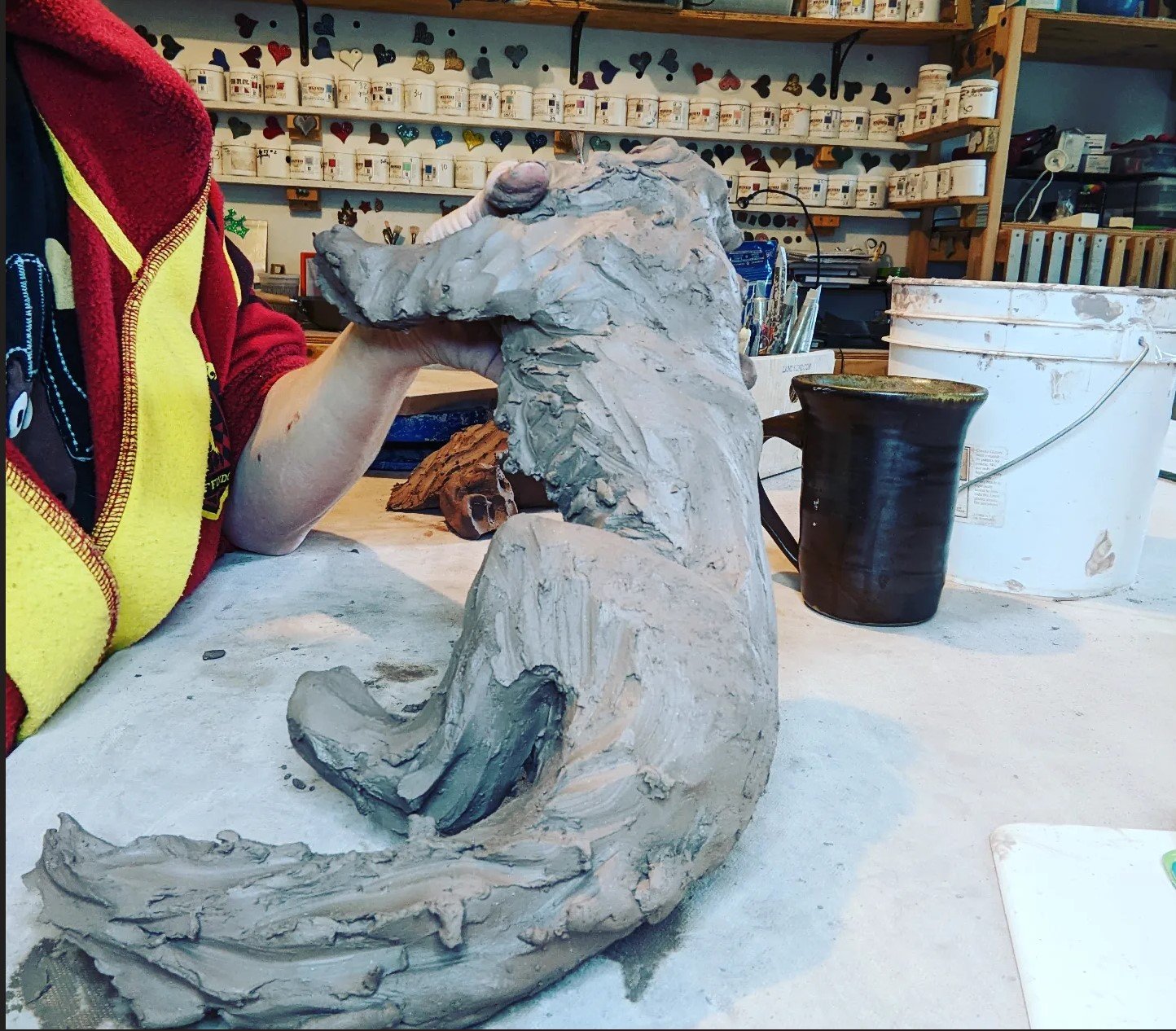Daytime Dreams
Getting my daughters on the school bus involves a lot of waiting for them to come down stairs. Waiting quickly turns into sculpting in my jammies, and wishing I was still in bed. The two motivations merged in this sleeping stretching wolf sculpture.
Mapping
Sculpting an animal always starts for me with mapping. Marking the location of all of the limbs helps me ‘see’ the animal before I start building. If I don’t map then the legs, back, head, and tail end up in spots that are not in ratio.
Adding Limbs and Maintaining Texture
Limbs are added right away before any find details. The limbs and head of the animal need to be in proportion and at correct angles or the viewer will notice. Texture on the body of the animal is created and maintained to add depth and interest when the clay is wet. If I smoothed the surface instead it would be much harder to add texture when the clay is dryer. The clay wouldn’t move with the same personality and flow.
Hollow
After all the major details have been added, the piece is cut into chunks, and the insides are hollowed out. Hollowing helps the piece begin to dry and harden, and reduces the weight of the piece. I work slowly and carefully to remove as much clay as I dared. If I pierce through it is easy at this point to add clay back to the wolf to repair the damage. All the pieces are reassembled when I am finished.
Underglaze
My sleeping dreaming wolf has a lot of texture and I used underglaze to highlight that texture. Mr. Wolf was bisque fired before I brushed on, and wiped off the underglaze. Bisque pieces are sturdier and less likely to break then underglazing on wet clay.
Glazing
I really should test my glazes before I decide to overlap them, but I just never find the time. I really wanted my wolf to have gray highlights, but it isn’t a very common glaze color. I created a milky opal glaze called Oasis and layered that with black, walnut, and charcoal in hopes of getting a gray and brown wolf and just crossed my fingers.







